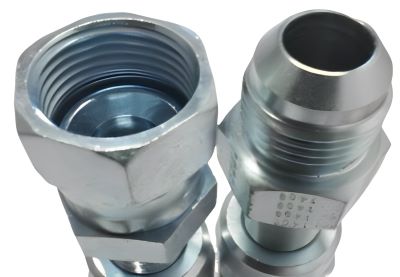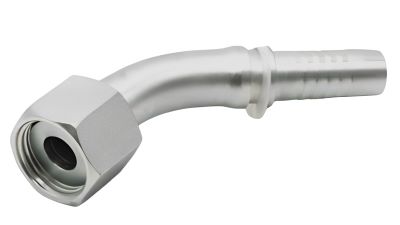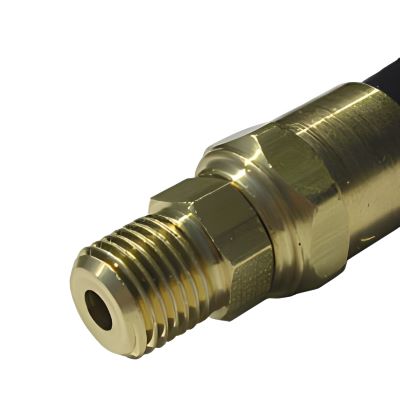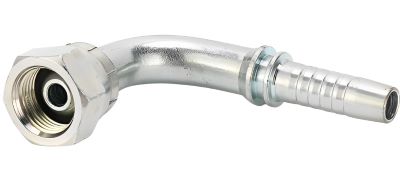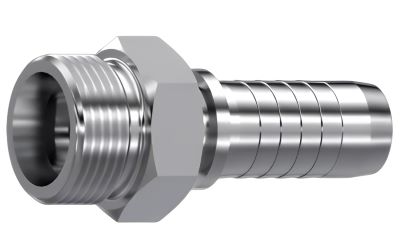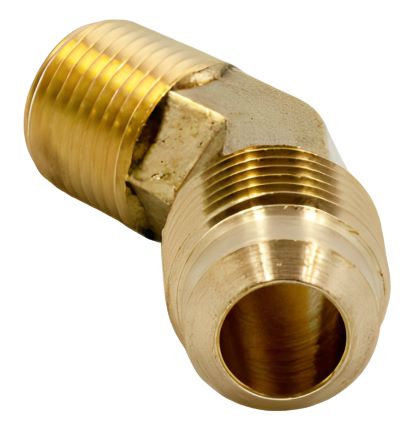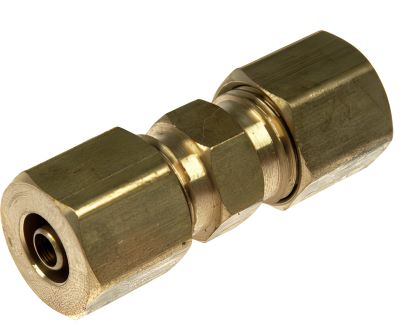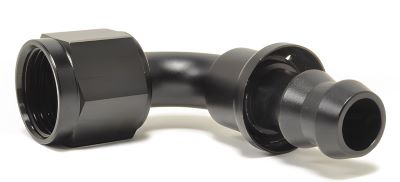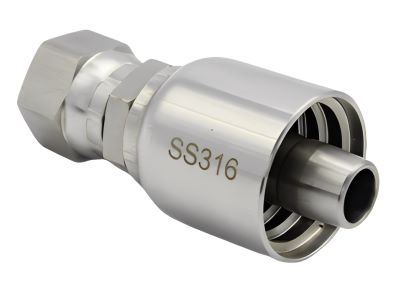Hydraulic hose ends are critical components in any hydraulic system. They serve as the connection point between the hydraulic hose and the system’s components, such as pumps, valves, and cylinders. These fittings ensure a secure, leak-free connection, which is crucial for the efficient and safe operation of hydraulic equipment.
Choosing the right hose end is essential to prevent accidents, minimize downtime, and optimize system performance. This blog post will delve into the various types of hydraulic hose ends, their key features, and their ideal applications.
What Are Hydraulic Hose Ends?
Hydraulic hose ends are specialized fittings designed to connect hydraulic hoses to other components in a hydraulic system. They typically consist of a metal body, a sealing mechanism (such as O-rings or ferrules), and a threaded or specialized connection.
The choice of hose end depends on several factors, including:
➡️ Pressure rating: The fitting’s maximum pressure tolerance.
➡️ Fluid compatibility: The type of fluid being used in the system.
➡️ Temperature range: The operating temperature of the system.
➡️ Vibration and shock resistance: The level of vibration and shock the system is subjected to.
Different Hydraulic Hose End Types
To better understand the different types of hydraulic hose ends, let’s take a visual tour:
JIC Hose Ends: Versatile and Reliable
JIC (Joint Industry Council) fittings are a popular choice for hydraulic systems due to their versatility and reliability. They feature a 37-degree flared cone design that ensures a tight seal. JIC fittings are commonly used in mobile equipment, construction machinery, and industrial applications.
ORFS Hose Ends: Leak-Proof Solutions
ORFS (O-Ring Face Seal) fittings use O-rings to create a leak-proof seal between the fitting and the hose. They are well-suited for high-pressure applications and are often found in hydraulic systems for heavy-duty equipment.
NPT Hose Ends: A Traditional Choice
NPT (National Pipe Thread) fittings are a traditional type of fitting that uses tapered threads to create a seal. While they are still widely used, they may not be the best choice for high-pressure applications due to potential leakage issues.
BSP Hose Ends: Global Compatibility
BSP (British Standard Pipe) fittings are commonly used in European and international hydraulic systems. They are available in two types: BSPP (British Standard Pipe Parallel) and BSPT (British Standard Pipe Taper). BSP fittings are known for their durability and compatibility with various hydraulic components.
Metric Hose Ends: Precision for Global Standards
Metric hose ends are standardized fittings that use metric threads. They are widely used in modern hydraulic systems due to their precision and ease of use. Metric fittings are available in a variety of sizes and configurations to meet the needs of different applications.
Flare Fittings: Ensuring Tight Seals
Flare fittings use a flared end on the hose to create a seal against a mating surface. They are commonly used in low-pressure applications and are known for their simplicity and ease of installation.
Compression Fittings: Simplified Connections
Compression fittings use a ferrule to create a seal between the hose and the fitting. They are appropriate for a variety of uses, such as industrial, marine, and automotive, and they are simple to install.
Push-On Hose Ends: Fast and Convenient
Push-on hose ends are a quick and easy way to connect hydraulic hoses. They are typically used in low-pressure applications and are not suitable for high-pressure or high-temperature environments.
High-Pressure Hydraulic Hose Ends: Built for Tough Conditions
High-pressure hydraulic hose ends are designed to withstand extreme pressures and temperatures. They are typically made from high-strength materials, such as stainless steel, and feature specialized sealing mechanisms to ensure reliability.
Choosing the Right Hose End for Your Application
When selecting a hydraulic hose end, it is important to consider the following factors:
➡️ Pressure rating: Ensure the fitting can handle the maximum pressure in your system.
➡️ Fluid compatibility: Choose a fitting that is compatible with the fluid being used.
➡️ Temperature range: Select a fitting that can withstand the operating temperature of your system.
➡️ Vibration and shock resistance: Consider the level of vibration and shock the system is subjected to.
➡️ Thread type: Ensure the fitting has the correct thread type to match the components in your system.
➡️ Sealing mechanism: Choose a fitting with a reliable sealing mechanism, such as O-rings or ferrules.
Maintenance Tips for Hydraulic Hose Ends
To ensure the longevity and performance of your hydraulic hose ends, it is important to follow these maintenance tips:
➡️ Regular inspection: Inspect hose ends for signs of wear, damage, or leaks.
➡️ Tightening: Check the tightness of fittings and tighten them if necessary.
➡️ Cleaning: Keep hose ends clean and free of debris.
➡️ Replacement: Replace damaged or worn-out hose ends promptly.
By following these guidelines, you can select the right hydraulic hose ends for your application and maintain the optimal performance of your hydraulic system.
Conclusion
Hydraulic hose ends are critical components in hydraulic systems, ensuring reliable and efficient operation. By understanding the various types of hose ends, their applications, and maintenance requirements, you can optimize system performance and minimize downtime.
Key takeaways:
➡️ Choose the right hose end: Consider factors like pressure rating, fluid compatibility, temperature range, and vibration resistance.
➡️ Proper installation: Follow manufacturer’s instructions and use appropriate tools.
➡️ Regular maintenance: Inspect hoses and fittings for wear and tear.
➡️ Safety first: Adhere to safety guidelines and use appropriate PPE.
➡️ Stay updated: Keep up with advancements in hydraulic technology.
By prioritizing these factors, you can ensure the long-term reliability and safety of your hydraulic systems.
Post time: Dec-05-2024


